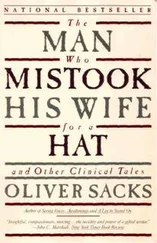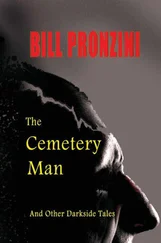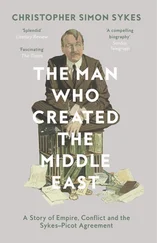Oliver Sacks - The Man Who Mistook His Wife For A Hat and Other Clinical Tales
Здесь есть возможность читать онлайн «Oliver Sacks - The Man Who Mistook His Wife For A Hat and Other Clinical Tales» весь текст электронной книги совершенно бесплатно (целиком полную версию без сокращений). В некоторых случаях можно слушать аудио, скачать через торрент в формате fb2 и присутствует краткое содержание. Город: New York, Год выпуска: 1970, ISBN: 1970, Издательство: Harper Collins, Жанр: Психология, на английском языке. Описание произведения, (предисловие) а так же отзывы посетителей доступны на портале библиотеки ЛибКат.
- Название:The Man Who Mistook His Wife For A Hat and Other Clinical Tales
- Автор:
- Издательство:Harper Collins
- Жанр:
- Год:1970
- Город:New York
- ISBN:0-06-097079-0
- Рейтинг книги:5 / 5. Голосов: 1
-
Избранное:Добавить в избранное
- Отзывы:
-
Ваша оценка:
- 100
- 1
- 2
- 3
- 4
- 5
The Man Who Mistook His Wife For A Hat and Other Clinical Tales: краткое содержание, описание и аннотация
Предлагаем к чтению аннотацию, описание, краткое содержание или предисловие (зависит от того, что написал сам автор книги «The Man Who Mistook His Wife For A Hat and Other Clinical Tales»). Если вы не нашли необходимую информацию о книге — напишите в комментариях, мы постараемся отыскать её.
The Man Who Mistook His Wife For A Hat and Other Clinical Tales — читать онлайн бесплатно полную книгу (весь текст) целиком
Ниже представлен текст книги, разбитый по страницам. Система сохранения места последней прочитанной страницы, позволяет с удобством читать онлайн бесплатно книгу «The Man Who Mistook His Wife For A Hat and Other Clinical Tales», без необходимости каждый раз заново искать на чём Вы остановились. Поставьте закладку, и сможете в любой момент перейти на страницу, на которой закончили чтение.
Интервал:
Закладка:
I wish to acknowledge the selfless help and generosity of the patients (and, in some cases, the relatives of the patients) whose tales I tell here—who, knowing (as they often did) that they themselves might not be able to be helped directly, yet permitted, even encouraged, me to write of their lives, in the hope that others might learn and understand, and, one day, perhaps be able to cure. As in Awakenings , names and some circumstantial details have been changed for reasons of personal and professional confidence, but my aim has been to preserve the essential ‘feeling’ of their lives.
Finally, I wish to express my gratitude—more than gratitude— to my own mentor and physician, to whom I dedicate this book.
New York
O.W.S.
PART ONE. LOSSES
To talk of diseases is a sort of Arabian Nights entertainment.
—William OslerThe physician is concerned [unlike the naturalist] . . . with a single organism, the human subject, striving to preserve its identity in adverse circumstances.
—Ivy McKenzieIntroduction
Neurology’s favourite word is ‘deficit’, denoting an impairment or incapacity of neurological function: loss of speech, loss of language, loss of memory, loss of vision, loss of dexterity, loss of identity and myriad other lacks and losses of specific functions (or faculties). For all of these dysfunctions (another favourite term), we have privative words of every sort—Aphonia, Aphemia, Aphasia, Alexia, Apraxia, Agnosia, Amnesia, Ataxia—a word for every specific neural or mental function of which patients, through disease, or injury, or failure to develop, may find themselves partly or wholly deprived.
The scientific study of the relationship between brain and mind began in 1861, when Broca, in France, found that specific difficulties in the expressive use of speech, aphasia, consistently followed damage to a particular portion of the left hemisphere of the brain. This opened the way to a cerebral neurology, which made it possible, over the decades, to ‘map’ the human brain, ascribing specific powers—linguistic, intellectual, perceptual, etc.—to equally specific ‘centres’ in the brain. Toward the end of the century it became evident to more acute observers—above all to Freud, in his book Aphasia —that this sort of mapping was too simple, that all mental performances had an intricate internal structure, and must have an equally complex physiological basis. Freud felt this, especially, in regard to certain disorders of recognition and perception, for which he coined the term ‘agnosia’. All adequate understanding of aphasia or agnosia would, he believed, require a new, more sophisticated science.
The new science of brain/mind which Freud envisaged came into being in the Second World War, in Russia, as the joint creation of A. R. Luria (and his father, R. A. Luria), Leontev, Anokhin, Bernstein and others, and was called by them ‘neuropsychology.’ The development of this immensely fruitful science was the lifework of A. R. Luria, and considering its revolutionary importance it was somewhat slow in reaching the West. It was set out, systematically, in a monumental book, Higher Cortical Functions in Man (Eng. tr. 1966) and, in a wholly different way, in a biography or ‘pathography’— The Man with a Shattered World (Eng. tr. 1972). Although these books were almost perfect in their way, there was a whole realm which Luria had not touched. Higher Cortical Functions in Man treated only those functions which appertained to the left hemisphere of the brain; similarly, Zazetsky, subject of The Man with a Shattered World , had a huge lesion in the left hemisphere—the right was intact. Indeed, the entire history of neurology and neuropsychology can be seen as a history of the investigation of the left hemisphere.
One important reason for the neglect of the right, or ‘minor’, hemisphere, as it has always been called, is that while it is easy to demonstrate the effects of variously located lesions on the left side, the corresponding syndromes of the right hemisphere are much less distinct. It was presumed, usually contemptuously, to be more ‘primitive’ than the left, the latter being seen as the unique flower of human evolution. And in a sense this is correct: the left hemisphere is more sophisticated and specialised, a very late outgrowth of the primate, and especially the hominid, brain. On the other hand, it is the right hemisphere which controls the crucial powers of recognising reality which every living creature must have in order to survive. The left hemisphere, like a computer tacked onto the basic creatural brain, is designed for programs and schematics; and classical neurology was more concerned with schematics than with reality, so that when, at last, some of the right-hemisphere syndromes emerged, they were considered bizarre.
There had been attempts in the past—for example, by Anton in the 1890s and Potzl in 1928—to explore right-hemisphere syndromes, but these attempts themselves had been bizarrely ignored.
In The Working Brain , one of his last books, Luria devoted a short but tantalising section to right-hemisphere syndromes, ending:
These still completely unstudied defects lead us to one of the most fundamental problems—to the role of the right hemisphere in direct consciousness. . . . The study of this highly important field has been so far neglected. ... It will receive a detailed analysis in a special series of papers ... in preparation for publication.
Luria did, finally, write some of these papers, in the last months of his life, when mortally ill. He never saw their publication, nor were they published in Russia. He sent them to R. L. Gregory in England, and they will appear in Gregory’s forthcoming Oxford Companion to the Mind .
Inner difficulties and outer difficulties match each other here. It is not only difficult, it is impossible, for patients with certain right-hemisphere syndromes to know their own problems—a peculiar and specific ‘anosagnosia’, as Babinski called it. And it is singularly difficult, for even the most sensitive observer, to picture the inner state, the ‘situation’, of such patients, for this is almost unimaginably remote from anything he himself has ever known. Left-hemisphere syndromes, by contrast, are relatively easily imagined. Although right-hemisphere syndromes are as common as left-hemisphere syndromes—why should they not be?—we will find a thousand descriptions of left-hemisphere syndromes in the neurological and neuropsychological literature for every description of a right-hemisphere syndrome. It is as if such syndromes were somehow alien to the whole temper of neurology. And yet, as Luria says, they are of the most fundamental importance. So much so that they may demand a new sort of neurology, a ‘per-sonalistic’, or (as Luria liked to call it) a ‘romantic’, science; for the physical foundations of the persona , the self, are here revealed for our study. Luria thought a science of this kind would be best introduced by a story—a detailed case-history of a man with a profound right-hemisphere disturbance, a case-history which would at once be the complement and opposite of ‘the man with a shattered world.’ In one of his last letters to me he wrote: ‘Publish such histories, even if they are just sketches. It is a realm of great wonder.’ I must confess to being especially intrigued by these disorders, for they open realms, or promise realms, scarcely imagined before, pointing to an open and more spacious neurology and psychology, excitingly different from the rather rigid and mechanical neurology of the past.
It is, then, less deficits, in the traditional sense, which have engaged my interest than neurological disorders affecting the self. Such disorders may be of many kinds—and may arise from excesses, no less than impairments, of function—and it seems reasonable to consider these two categories separately. But it must be said from the outset that a disease is never a mere loss or excess— that there is always a reaction, on the part of the affected organism or individual, to restore, to replace, to compensate for and to preserve its identity, however strange the means may be: and to study or influence these means, no less than the primary insult to the nervous system, is an essential part of our role as physicians. This was powerfully stated by Ivy McKenzie:
Читать дальшеИнтервал:
Закладка:
Похожие книги на «The Man Who Mistook His Wife For A Hat and Other Clinical Tales»
Представляем Вашему вниманию похожие книги на «The Man Who Mistook His Wife For A Hat and Other Clinical Tales» списком для выбора. Мы отобрали схожую по названию и смыслу литературу в надежде предоставить читателям больше вариантов отыскать новые, интересные, ещё непрочитанные произведения.
Обсуждение, отзывы о книге «The Man Who Mistook His Wife For A Hat and Other Clinical Tales» и просто собственные мнения читателей. Оставьте ваши комментарии, напишите, что Вы думаете о произведении, его смысле или главных героях. Укажите что конкретно понравилось, а что нет, и почему Вы так считаете.











